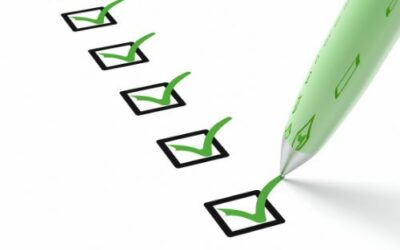
If you’re planning to use an IT asset register, congratulations, you are about to take full control of your IT assets. While this may not seem like a huge deal right now, you’ll soon see just how valuable an IT asset register is to your business.
This type of asset register can help you to have a lot more control over some of the most valuable assets that you own. But what should you include in a register such as this? This is exactly what we cover in this article.
What Exactly Is An IT Asset Register?
An asset register that specifically pertains to your IT assets consists of a list of your business’s IT equipment. In other words, all of your computers, laptops, printers, and anything else you consider to be “IT”. The list can then be used to help you track your IT assets and help you to understand whether licences are up to date.
An IT asset register can come in the form of a spreadsheet, a list in a book, or some software. The latter tends to be the better option to choose. This is because software is a lot less likely to make a mistake. In addition to this, the software can continuously update and help to create a lot of useful data.

What To Include In An IT Asset Register
Knowing what to include in an asset register can be difficult. However, when you narrow it down to just your IT equipment for now, you make life a little easier. You can add the following to your register, should you wish to:
- Desktop computers
- Printers
- Modems
- Wires, leads, and cables
- Laptops and laptop cases
- Spare laptop batteries and cables
- Tablets and charges
- Tablet cases
- Tablet screen protectors
- Spare tablet chargers
- Photocopiers
- Monitors
- Software licences
- Memory sticks
- And any other IT equipment
There is a real potential for you to add a lot of equipment to your asset register. As a result, you may find it easier to group a lot of the equipment into collections. For example, anything that relates to your desktop computers could be placed in one collection. Your software licences, for example, could be placed in another. This ensures that when you want to find a particular computer monitor, for example, you can locate it easily.
Making Use Of Asset Tags
The best way for you to track your IT assets and any other assets is for you to use asset tags. Tags such as these will enable you to monitor each asset’s location. In addition to this, they can also help you to quickly edit information about each asset. If, for example, you wish to find out when a printer was purchased you can access that particular printer’s profile. You can do this by scanning the tag. When the tag is scanned it will open up the printer’s profile. As long as the date of purchase has been added to the printer’s profile, you can access the information.
Adding Information To Each Asset’s Profile
We have just briefly touched on accessing information regarding a particular asset. What we have not yet discussed is how that information has been added to a profile. Let’s take a look at this now.
When you affix a tag to an asset, scanning the tag will create a digital profile. You can then assign the digital profile to the asset in question. It is then possible for you to add information about each IT asset. You can add information such as the asset’s:
- Model, brand, and serial number
- Date of purchase
- Price at purchase
- Estimated lifespan
- Warranty and insurance details
- Instruction booklet or manual
- Software licence information
- Date of licence renewal/expiry
- Maintenance schedule and status
- Usual location(s)
- List of past and current users
- Latest photograph for easy identification
- Collections that it is located in
- Notes that have been left for future users
- And so much more
You can add as much information as you wish to your IT asset register. In fact, the more information you add, the better. The more information there is about each asset, the easier it is for you to find exactly what you’re looking for. If you want to read an asset’s insurance details you can simply log into the software and take a look. You won’t have to search through a lot of paper files hoping that you have not accidentally disposed of the information. Rather, you can access it when you need to and save a lot of time and worry.
Would you like to speak with an expert about an IT asset register? Contact us now at team@itemit.com. We can help you to understand how to have more control over your most valuable assets.

Try itemit
Choose a better way to track
your assets.
Start your free 14-day trial now!

Keep Learning
itemit Blog
Tips, guides, industry best practices, and news.
Why Having An Accurate Asset Register Is Important
Why is having an accurate asset register so important and how can it help with equipment tracking? Read this post now to find out!
What To Include In Your Fixed Asset Register
What should you include in your fixed asset register and how can you make it work for you? Read this post now to find out!
What Exactly Is An Asset register?
What exactly is an asset register and will your chosen asset register format offer you everything you need? Read this post to find out!



